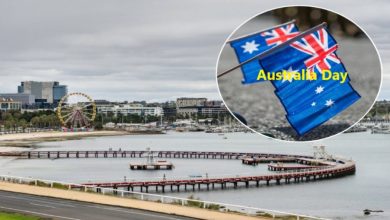Heatwave In Australia With Brisbane, Perth, And Sydney Affected 2025

Australia is no stranger to extreme weather, but this year’s heatwave is causing widespread concern in major cities like Brisbane, Perth, and Sydney. With rising temperatures breaking records and placing immense pressure on infrastructure, health, and daily life, it’s crucial to understand the factors behind these heatwaves, their impact, and how cities are adapting to these challenges.
Whether you’re personally affected or curious about Australia’s climate crisis, this post dives into what you need to know about the ongoing heatwave and how the affected cities are tackling it.
What Is Causing the Heatwave in Australia?
Heatwaves in Australia are becoming more intense and frequent, driven in part by climate change. Weather experts point to the combination of natural phenomena, such as El Niño, and the long-term effects of global warming as key contributors to these extreme conditions.
- El Niño’s impact:
El Niño events bring hotter and drier weather to Australia, intensifying heatwaves. This year’s El Niño cycle has worsened temperature spikes across the eastern and southern parts of the country, including Brisbane and Sydney.
- Global Warming:
Rising global temperatures have increased the baseline for heatwaves, making them not only more common but also more extreme. Australia is warming faster than the global average, which exacerbates the problem.
According to the Bureau of Meteorology, parts of Australia are experiencing record-breaking temperatures, with some regions surpassing 45°C (113°F). This year’s heatwave is pushing cities like Brisbane, Perth, and Sydney to their limits.
The Impact of Heatwaves on Australian Cities
1. Brisbane
Brisbane has witnessed soaring temperatures, placing its urban infrastructure and residents under significant strain.
Key challenges:
- Health Risks:
Heatstroke and dehydration cases are rising, especially for young children, the elderly, and those with chronic illnesses. Emergency services have reported an increased number of heat-related calls.
- Urban Heat Island Effect:
Brisbane’s dense urban areas are amplifying the heat. Streets, buildings, and paved surfaces absorb and hold heat for longer periods, making the nights as stifling as the days.
- Energy demand:
With air conditioners working overtime to neutralize the heat, Brisbane’s energy grid is feeling the pressure. Experts are warning of potential blackouts if demand continues to rise.
2. Perth
Perth isn’t escaping the heatwave’s grip either, with similar disruptions wreaking havoc across the city.
Key challenges:
- Wildfires:
Heatwaves increase the risk of bushfires in the dry forests and scrublands surrounding Perth. Firefighters are on high alert, and evacuation plans are being prepared for at-risk neighborhoods.
- Water Shortages:
High temperatures also increase water consumption. With rainfall averages already low, water restrictions may become a reality to address dwindling supply levels.
- Impact on Agriculture:
Perth’s outskirts host a significant agricultural hub, and heatwaves are endangering crops. Farmers are struggling with reduced yields and higher water needs.
3. Sydney
With a population of over 5 million, Sydney bears the brunt of Australia’s heatwave in unique ways.
Key challenges:
- Public Transportation Stress:
Trains, buses, and ferries face disruptions as extreme heat interferes with operations. Rail tracks expand under intense heat, causing delays and even cancellations.
- Beaches Overwhelmed:
Alongside heat, Sydney often experiences high humidity. This leads tens of thousands of residents to flock to beaches, creating overcrowded conditions and strain on lifeguard resources.
- Healthcare Systems Overloaded:
Similar to Brisbane, Sydney hospitals are dealing with an influx of heat-related illnesses, putting immense pressure on emergency departments.
Adapting to the Challenges of Heatwaves
Despite the challenges posed by heatwaves, cities like Brisbane, Perth, and Sydney are ramping up efforts to tackle these issues head-on.
1. Enhancing Urban Planning
Local governments are investing in innovative urban cooling solutions, such as:
- Planting more trees and vegetation to create shade and reduce the urban heat island effect.
- Developing reflective roofs and pavements to decrease heat absorption.
- Expanding the availability of public cooling centers for vulnerable populations.
2. Community Education
Authorities in affected cities are focusing on educating the public to stay safe during extreme heat events. Campaigns emphasize:
- Staying hydrated and avoiding outdoor activities during peak heat hours.
- Recognizing symptoms of heatstroke and seeking immediate medical help when needed.
- Protecting pets, wildlife, and plants under extreme heat conditions.
3. Investing in Renewable Energy
Heatwaves also provide a wakeup call to scale renewable energy solutions to handle energy demand better:
- Australia is actively transitioning to solar and wind farms to reduce reliance on overburdened fossil fuel power grids.
- Battery storage solutions, such as the ones pioneered in projects like South Australia’s Tesla Battery, are being considered on a larger scale.
4. Strengthening Infrastructure
Cities are also reinforcing their transportation and power infrastructure to make it more resilient to extreme heat. This involves creating heat-resistant rail tracks, strengthening transmission lines, and updating cooling systems in public spaces.





















